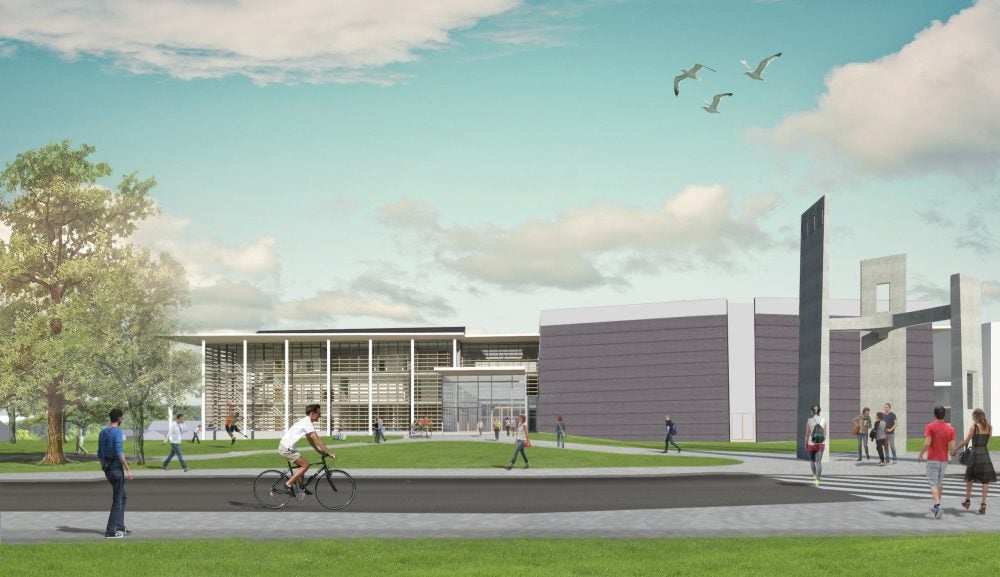This page was last updated in 2021, and is maintained here for archival purposes. Learn more about major changes to the Fine Arts Center.

Media: KMW Architecture & Brewster Thornton Group
On March 2, 2021, Rhode Island voted Yes on Question 1, approving $57.3 million to continue upgrades to URI’s Fine Arts Center.
This will help the University of Rhode Island complete major improvements to the Fine Arts Center, which brings more than 50,000 visitors to the Kingston Campus each year, hosting scores of attractions, including five main stage plays, more than 100 concerts, eight main gallery shows and smaller exhibits.
“Approval of Question 1 means our art, music and theater students and faculty members will have bright, highly functional and creative spaces in which to teach, learn and perform,” said President David M. Dooley.
A distinctively squat-looking building, the Fine Arts Center, designed in the blocky, monolithic Brutalist style, opened in 1968, and is home to URI’s theatre, music and art departments, which serve more than 5,000 students each year.
The work funded by the newly approved bond issue calls for tearing down five of the center’s 10 pods and constructing an 82,000-square-foot academic building to house the music and art departments. Work is expected to start in summer 2022.
- For the Theatre Department, building improvements will feature a new lobby in front of the Robert E. Will Theatre, the department’s largest stage; improved access to J-Studio, the smaller black box theater; updated restrooms to serve the large number of patrons who attend theater productions; and two new modern acting classrooms.
- For the Art and Art History Department, the bond funding will mean updated studios and classrooms with improved lighting, and new technical areas for digital art, graphic design, and a range of photographic and video-related media.
- The Music Department will see major changes, too—new classrooms, practice rooms, faculty studios, recording studios, and a suite for the new music therapy program, in which clients will receive music therapy as students in the program observe, similar to a clinical setting.
“These new spaces will welcome guests and students into a new era of the arts and will continue our reputation for exceptional arts education,” says David Howard, chair of URI Theatre. “In a sense, I think the new building will reflect the beauty and vibrancy of the art that is happening inside in a way the old building never has.”
Arts Programs



